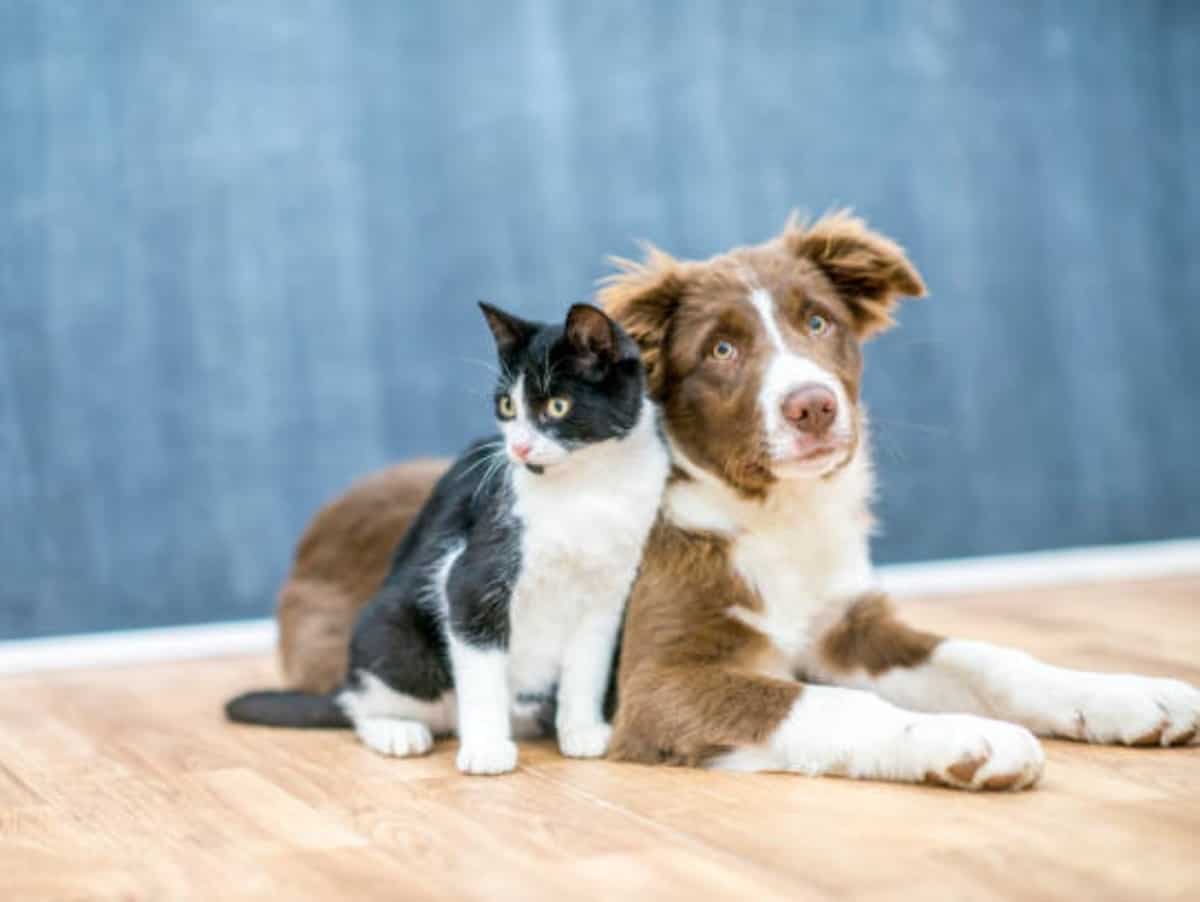What is pet insurance? Ask this question to most pet owners, and you’re likely to get puzzled looks. That’s because most guardians have no idea that pet insurance is even a thing! However, pet insurance is something that could come in handy, especially if you’re faced with paying a huge emergency vet bill. Let’s take a closer look at pet insurance and what it could do for you. We all want the best for our furry friends, and sometimes the best includes pet insurance.
What Is Pet Insurance?
Pet insurance is a policy that can protect you from unexpected veterinary bills. Most guardians end up paying out of pocket for pet-related medical expenses. For example, the average medical expenses related to dogs can range from $900 to $2,600 per year! And for cats, the cost can average between $700 to $835. Now, keep in mind these estimates don’t include injuries or expenses related to illness. And then, of course, you have other expenses such as food, toys, clothing (for some), grooming, and babysitting services, to name a few.
Let’s face it. Life is full of uncertainty, and we never know if or when a medical emergency will pop up and disrupt our lives. With pet insurance, you can better safeguard your finances while ensuring your pet gets the care they need when they need it.

Common Medical Condition Pets Face
Pets can often suffer from various health issues that can cost hundreds to thousands of dollars to treat. Sadly, many owners can not afford expensive treatments, causing their pets to suffer. Here is a list of common conditions along with their costs.
Medical Conditions Commonly Found in Dogs
- Ear Infections: Treatment costs up to $800
- Allergic Reactions: Treatment costs up to $3,000
- Skin Conditions: Treatment costs up to $4,000
- Stomach Issues: Treatment costs up to $6,500
- Cruciate Ligament Injuries: Treatment costs up to $6,500
- Limping: Treatment costs up to $20,000
- Growths / Lumps / Cancer: Treatment costs up to $6,000
- Urinary Tract Infections: Treatment costs up to $6,0000
- Eye Infections: Treatment costs up to $2,000
- Pain Management: Treatment costs up to $3,000
Medical Conditions Commonly Found in Cats
- Ear Infections: Treatment costs up to $800
- Skin Conditions: Treatment costs up to $4,000
- Eye Infections: Treatment costs up to $6,000
- Growths / Lumps / Cancer: Treatment costs up to $15,000
- Kidney Disease: Treatment costs up to $3,500
- Stomach Issues: Treatment costs up to $6,500
- Urinary Tract Infections: Treatment costs up to $6,000
- Diabetes: Treatment costs up to $2,000
Breed-Specific Health Issues
Certain pet breeds have specific health issues that can increase the cost of ownership significantly. According to the Orthopedic Foundation for Animals, one example is pugs, who have almost a seven times higher likelihood of developing a condition known as hip dysplasia than poodles. Treatment for this condition can cost between $1,700 to $5,000.
Breed-specific health issues can add thousands of dollars per year to the care of certain pets.
Pet Insurance Coverage
Most pet insurance policies will cover serious health issues, which can be quite costly without a pet insurance policy. Just like human health insurance, pet insurance policies can range in coverage. However, pet insurance works a lot more like property insurance in that the company will often reimburse you for certain pet healthcare expenses.
The best insurance companies will reimburse customers between 80 and 100 percent of their vet bill (after meeting their deductible). And like most insurance policies, you’ll need to pay a monthly premium to maintain your pet’s coverage. Once you’ve met your deductible, the insurance company will usually cover your pet’s eligible expenses. This coverage is based on your reimbursement rate and may have a limit.
What Is Most Commonly Used With Pet Insurance
- Unexpected injuries from accidents such as broken bones, foreign object ingestion, and more
- Prescription medication
- Unexpected illnesses such as glaucoma, cancer, hip dysplasia, ear infections, and more
- Diagnostics/tests such as blood tests, x-rays, MRIs, and more
- Surgery such as cataracts, cancer removal, and more
- Emergency exam fees
However, it’s important to keep in mind that there are expenses pet insurance will not cover.
Conditions Often Not Covered Through Pet Insurance:
- Routine care
- Wellness exams
- Vaccinations
- Pre-existing medical conditions
- Preventative care
- Spay/Neuter
- And specific exclusions

Types of Pet Insurance Plans
There are typically three types of pet insurance plans. These plans are accident-only, accident-illness, and accident-illness with a wellness add-on. Let’s take a closer look at each.
With accident-illness plans, the insurer provides reimbursement for emergency medical care connected to accidents. One example would be if your pet were hit by a car or otherwise suffered a sudden injury. However, this coverage does not include pre-existing conditions, breed-specific health problems, or illnesses.
If you choose an accident-illness plan, your pet will have coverage for both unexpected illnesses and accidents. This is the most popular coverage and represents roughly 98 percent of plans purchased by customers. However, this type of coverage does not include pre-existing conditions or preventative care. But, you should be able to anticipate being reimbursed for nearly all other costs.
Last, there are accident-illness plans with a wellness add-on. This is the most comprehensive plan available on the market and also the most expensive. But, if you’re looking for a plan that covers virtually all of your pet’s medical expenses, this is the closest plan you’ll find. That said, like the others, this plan does not include coverage for any pre-existing conditions.
Costs, Deductibles, Claims, Policy Terms, and Fine Print
When it comes to the cost of policies, there are several factors companies consider. These include:
- Breed
- Size (weight, height)
- Location
- Age (measured against your pet’s typical life expectancy)
- Common outdoor and indoor environmental risks
- Reimbursement Rate
- Length and term of policy
- Payout
- Deductible
- Insurer
- Plan Type

Deductibles, Policy Terms, and Claims
It’s really important that you really pay close attention to certain insurance policy terms. This is especially true when it’s concerning reimbursement rates, deductibles, waiting periods, maximum payout limits, and exclusions before enrolling.
Your deductible represents the amount that you’ll need to pay your pet’s healthcare provider before the insurer reimburses you for eligible expenses. For example, if your policy has a $300 deductible and your dog needs a $1,500 tooth extraction, then you would end up saving $1,080. You see, $1,500 – $300 = $1,200. And 90 percent of $1,200 is $1,080.
Maximum Payout Limit
Your policy’s maximum payout limit will either be an “annual limit” or based on “per-incident.”
The most popular plans have annual limits, and many offer limitless payouts. What this means is, if you meet your deductible, the insurer will not limit the amount of money they reimburse you. Now, if you consider how many older pets develop conditions such as cancer, a policy that offers unlimited maximum payout can be a real-life saver.
The Fine Print
Reading the fine print can be tiresome. But when it comes to insurance policies, it’s always advisable to understand this part because it often contains your policy’s waiting periods and exclusions.
Waiting Period
Many policies may have waiting periods, representing the time between when you enroll and when your policy goes into effect. Different insurers will often have different waiting periods. For example, you may look at two different plans that seem on the surface to be identical. However, one plan may have a waiting period of one year for any knee injury your pet suffers, while the other may only have a one-month waiting period for the same condition. Now, if you have a larger dog, they will have a higher risk of knee injuries, which means you’ll probably want to take the plan with the shortest waiting period for that specific condition.
Exclusions
Exclusions include any condition (such as pre-existing conditions) or medical services not covered in your policy.
How You Can Find the Lowest Pet Insurance Rates
The best way to save money on a pet insurance policy is to start one while your pet is still young. This way, you’re almost guaranteed to pay lower monthly premiums. Also, there are some insurers who will provide a discount on paying your premium annually. Many also offer discounts for multiple pets.



